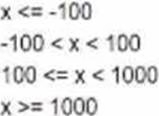ISTQB ISTQB-CTFL ISTQB-Foundation Level Exam Online Training
ISTQB ISTQB-CTFL Online Training
The questions for ISTQB-CTFL were last updated at Jul 19,2025.
- Exam Code: ISTQB-CTFL
- Exam Name: ISTQB-Foundation Level Exam
- Certification Provider: ISTQB
- Latest update: Jul 19,2025
Which of the following s the most correct statement about state testing techniques?
- A . Static techniques can be used before all code is ready for execution
- B . Static techniques find more detects then dynamic techniques.
- C . Static techniques can be used by inexperienced users.
- D . Static techniques are always cheaper than dynamic techniques.
A test manager decided to skip static testing since he believes bugs can be found easily by doing dynamic testing. Was this decision right or wrong?
- A . The decision was wrong. Ensuring quality mandates that static testing is performed after performing the dynamic testing.
- B . The decision was right. Static testing is usually redundant if a product is planned to go through a full-cycle of dynamic testing.
- C . The decision was right. Most of the bugs are easier to identify during the dynamic testing.
- D . The decision was wrong. Static testing can find defects early in the development process, reducing the overall cost of testing and development
In which of the following test documents would you expect to find test exit criteria described9
- A . Test design specification
- B . Project plan
- C . Requirements specification
- D . Test plan
The following 4 equivalence classes are given:

Which of the following alternatives includes correct test values for x. based on equivalence partitioning?
- A . -100; 100:1000; 1001
- B . -500; 0; 100; 1000
- C . -99; 99:101; 1001
- D . -1000; -100; 100; 1000
Which of the following coverage criteria results in the highest coverage for state transition based test cases?
- A . Can’t be determined
- B . Covering all transitions at least once
- C . Covering only start and end states
- D . Covering all states at least once
Which of the following lists factors That contribute to PROJECT risks?
- A . skill and staff shortages; problems in defining the right requirements, contractual issues.
- B . skill and staff shortages; software does not perform its intended functions; problems in defining the right requirements.
- C . problems in defining the right requirements; contractual issues; poor software quality characteristics.
- D . poor software quality characteristics; software does not perform its intended functions.
Which sequence of stated in the answer choices is correct in accordance with the following figure depicting the life-cycle of a defect?

- A . S0->S1->S2->S3->S5->S1
- B . S0->S1->S2->S3->S5->S1->S2->S3
- C . S0->S1->S2~>S3->S4
- D . S0->S1 ->S2->S3->S5->S3->S4
A Test Manager conducts risk assessment for a project. One of the identified risks is: The sub-contractor may fail to meet his commitment". If this risk materializes. it will lead to delay in completion of testing required for the current cycle.
Which of the following sentences correctly describes the risk?
- A . It is a product risk since any risk associated with development timeline is a product risk.
- B . It is no longer a risk for the Test Manager since an independent party (the sub-contractor) is now managing it
- C . It is a object risk since successful completion of the object depends on successful and timely completion of the tests
- D . It is a product risk since default on part of the sub-contractor may lead to delay in release of the product
Who of the following has the best knowledge to decide what tests in a test project should be automated?
- A . The developer
- B . The customer
- C . The development manager
- D . The test leader
Which of the following are the phases of the ISTQB fundamental test process?
- A . Test planning and control, Test analysis and design, Test implementation and execution, Evaluating ex t criteria and reporting. Test closure activities
- B . Test planning, Test analysis and design. Test implementation and control. Checking test coverage and reporting, Test closure activities
- C . Test planning and control, Test specification and design. Test implementation and execution, Evaluating test coverage and reporting, Retesting and regression testing, Test closure activities
- D . Test planning. Test specification and design. Test implementation and execution. Evaluating exit criteria and reporting. Retesting and test closure activities
Latest ISTQB-CTFL Dumps Valid Version with 76 Q&As
Latest And Valid Q&A | Instant Download | Once Fail, Full Refund

